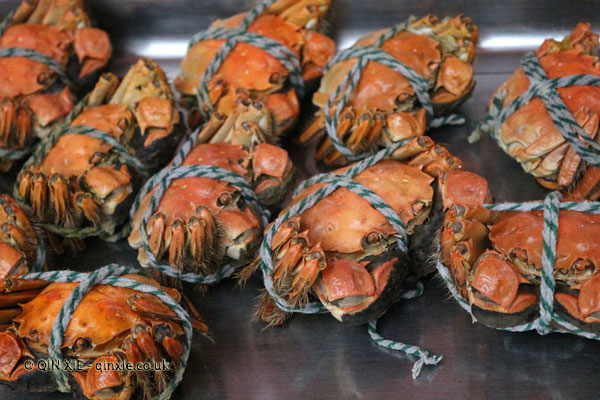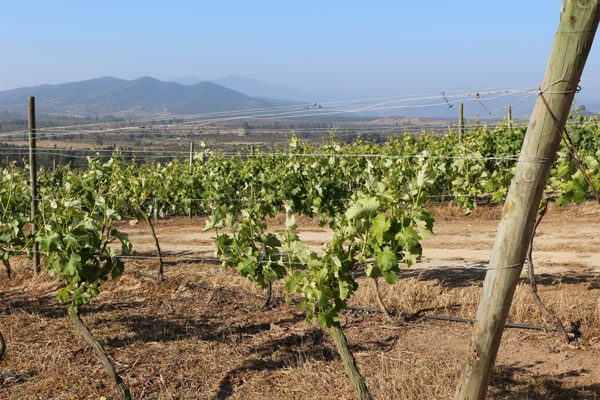Published this month:
- Watch where you’re going! Family of five left stranded on the roof of their car after the driver took a wrong turn and plunged them into a river
- Sickening pictures show more than 2,600 anteaters found butchered and shelled by Chinese officials busting wildlife smugglers
- Giddy-up Miss Piggy! Chinese farmer rears enormous 94-stone pig for food… but she’s so big he decided to ride her like a horse
- Yuanxi, we have a problem! Massive chunks of rocket debris fall from the sky and smash into Chinese village
- Hilarious photos show ingenious anti-burglar devices invented by Chinese students after their university refused to report a series of break-ins
- Bizarre moment furious father batters cheating son’s mistress to defend his daughter-in-law during family confrontation
- Is this the world’s most expensive selfie?French President François Hollande photographed with Chinese entrepreneurs worth more than £46 BILLION in Beijing
- Now THAT’S what we call stunt driving! SUV left suspended on two bollards and a set of steps after owner got sick of finding a parking space
- CCTV footage exposes the shocking tactics employed by Chinese phone-snatchers who steal from oblivious gamers at internet cafe
- Is this the pinkest room ever? Dorm decorated with shiny wallpaper and beaded curtains is for MALE students in China
- Baby dumped in a public toilet: Sickening moment student father caught carrying his newborn daughter in a cardboard box and leaving her
- Frozen beauty: Incredible photographs capture surreal scenery after first snowfall in Chinese city where lush trees turn into enormous icicles
- Not your average Chinese takeaway! Former cocktail waitress makes £16k a month and drives a Mercedes-Benz after luxury food delivery service for the super rich takes off
- Bizarre moment Chinese man ‘sniffs and licks’ a stranger’s SHOE after snatching it straight off his foot on a bus
- How to travel the world in your garden: Chinese residential compound builds wacky knock-off versions of famous landmarks
- China goes super-sized
- You can’t get away! Incredible moment three ‘moped heroes’ chase a mugger for more than half a mile after he robs a woman
- Shocking moment man and his horse goes flying through the air after being hit by speeding BMW while out riding at night
- Teddy-ous link? Bizarre pictures show four BEAR CUBS being paraded around Chinese city to promote new homes
- Out of the frying pan… into the fire! Chinese chef throws burning gas canister after accidentally igniting it – only for it to roll down the street and destroy a coach
- Shocking pictures show family argument turn violent as man picks up a MACHETE and threatens to kill his step-son
- Heartbreaking pictures show boy, 7, forced to do his homework under the light of a street lamp so his parents can run their night market stall
- Voodoo-nit! Chinese man builds a SHRINE to curse the person who smashed his car window after police failed to find the culprit
- In sickness and in health: Heart-warming story of a bride-to-be who refuses to abandon her fiancé after he’s paralysed by an accident on the eve of their wedding
- Golden retriever left fighting for life after neighbour smashed through a METAL door with a hammer and THREW it out of the fourth floor window
- What a Super idea! Bizarre new trend sees Chinese firms attaching models dressed up as comic book heroes to buses
- A face you can bank on: China launches the country’s first cash machines using facial recognition technology
- Chinese engineer travels more than 5,400 MILES from Ethiopia to his home hospital to have two fingers he lost in a work accident reattached
- The Chinese village with a secret family planning policy: Rural community claims mysterious herbal potion helps its couples ‘decide the gender of their babies’
- Cutting-edge design? Office building appearing as thin as a piece of paper becomes new landmark in China
- Who says print is dead? Chinese newspaper fan hoards SEVEN TONNES of publications over 40 years
- ‘If you’re not afraid, then it’s not painful’: Brave 13-year-old boy donates stem cells to save leukaemia-stricken father
- Life in the fast lane: Incredible time-lapse video shows Chinese engineers rebuilding 1,300-tonne bridge in just 36 HOURS
- TripAdvisor sparks outrage for refusing to run a review… because it’s written in WELSH
- Are these the most overrated places in the world? How Dubai, Venice and Los Angeles have left some tourists sorely disappointed
- Chinese hairdresser nearly dies after performing DIY castration in an attempt to complete transition to a woman
- Dublin Airport accused of spying on its passengers by monitoring their mobile data
- Is India the most colourful place on Earth? Spectacular images show the Asian country at its most vibrant
- The ice that will never melt: Incredible images show a frozen world deep inside the Canadian Rockies
- Don’t look down! Astounding moment fearless daredevil walks slackline suspended 400 feet in the air
- Why you really SHOULD get a room: New statistics reveal your sex life could be better in a hotel (with Mexicans reporting biggest improvement and Germans the least)
- Passengers hospitalised after a plane hit ground so hard that its landing gear COLLAPSED and the left wing fell off
- Pictured: Frequent flier who claims he was ‘kicked off’ plane for being TOO BIG for his seat
- An expensive goodbye: Airport drop-off charges could be on the rise as UK aviation minister sings its praises
- Skilled parking or blind luck? Woman with three months driving experience manages to squeeze her Volkswagen into an extremely narrow doorway in the DARK
- There’s no smoke without… FIRED! Angry billionaire boss dismisses Chinese factory workers after they failed to recognise the tycoon and swore at him for interrupting their cigarette break
- Cruelty of the Tokyo ‘euthanasia centre’ for stray dogs where animals suffer for FIFTEEN minutes before they die from suffocation in canine ‘gas chamber’
- Pictured: Former Marine who claims he was ‘kicked off’ American Airlines flight for being TOO BIG for his seat
- Wedding antics gone too far? Chinese bridesmaid has her breasts groped by male guests as the crowd cheers ‘touch, touch’
- Shocking moment drunk man evading punishment weaves through city traffic while a policeman clings to his car
- Burnt by love: Chinese woman who was doused in petrol and set alight by ex-boyfriend over failed relationship demands £484,000 in compensation from her attacker
- Hungry for mice? Horrific moment baby rodents are dipped into a sauce and then eaten ALIVE as Chinese delicacy
- ‘ISIS’ fashion retailer in China forced to rebrand after pictures of the signage shared online caused owner endless harassment
- Hang on a minute… or SEVEN HOURS! Hapless paraglider dangles like a puppet after his parachute gets tangled on a 110,000 volt power line
- Chinese charity worker who ‘adopted’ hundreds of children through her orphanages killed in traffic accident while returning from philanthropic work
- Is she the world’s most passionate conductor? Musician gives the performance of her life for Chinese village wedding
- Design in casual dining
- Just for show: China’s gay community is using dating apps to find people of the OPPOSITE sex for sham marriages
- Horrific moment an enormous Alsatian tears into a three-year-old girl like a rag doll as her mother struggles to prevent the attack
- Heart-breaking story of family forced to live inside a minivan in order to save money for their baby’s medical treatment
- The freshest seafood and the most lovingly made wines: Why gorging on the sensory delights of Chile’s Aconcagua Valley will leave you absolutely speechless
- Ryanair refused to give £2,000 refund to 27 tourists who cancelled their flights to Brussels as city was under terror lockdown
- Why it’s best to take a morning flight and why some landings may be deliberately bumpy: The secrets that pilots won’t tell you
On the blogs:

